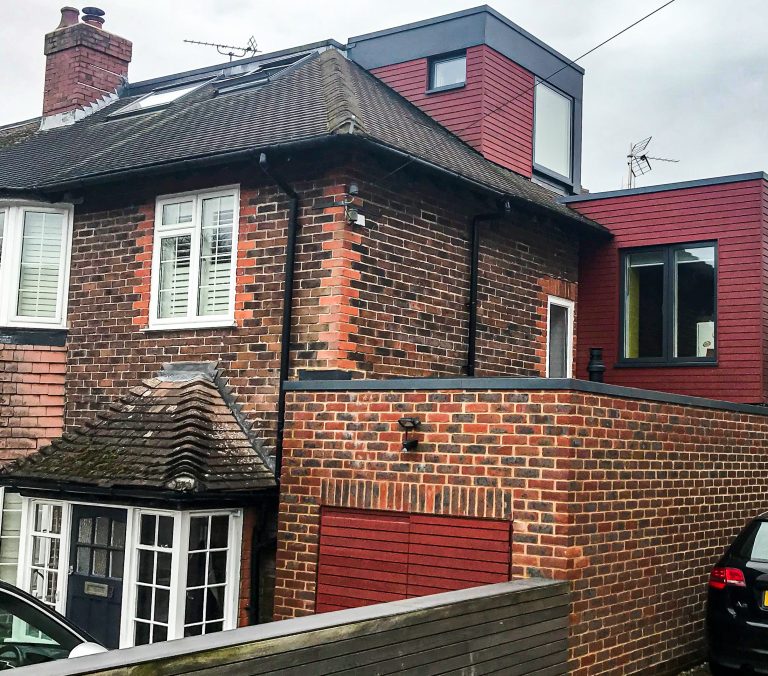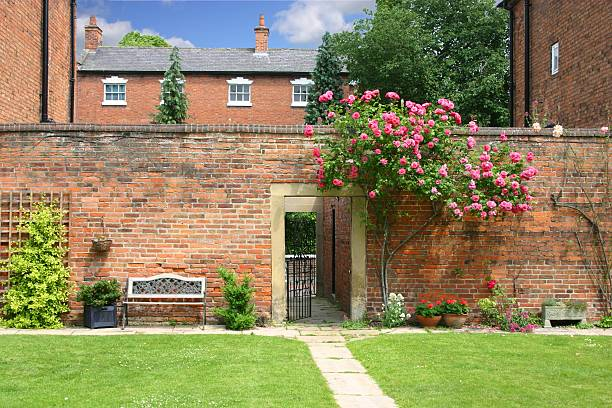A hip-to-gable loft conversion is a wonderful method for adding extra space in your house without having to deal with the costs and hassles of moving! You may create a new living area that can be used for anything from a home office to an extra bedroom by converting the unused hip portion of your roof into a loft space. This is an excellent approach to add more value to your property while also increasing the amount of living room you have!
Get A FREE Quote Now
Click the button below to receive your complimentary, no-obligation quote from our local specialists.
What is a hip-to-gable loft conversion and how can it add value to my home
A hip-to-gable loft conversion is a type of loft conversion that involves converting the unused hip section of your roof into a loft area. This is a great way to add more space to your home without having to go through the expense and hassle of moving! By converting the hip section of your roof into a loft, you can create more space that can be used for anything from a home office to an extra bedroom. This is a great way to add more value to your home and increase the amount of extra space you have!
The benefits of having maximum space in your home
Living in a cramped, small home can be frustrating and stressful. Not having enough space can cause problems with storage and can lead to overcrowding. When you don’t have enough space to spread out, it can be difficult to relax and get comfortable.
Having more living space in your home can have many benefits. Here are some of the most important benefits:
1. More storage space: When you have more living space, you will have more room for storage. This can be helpful in freeing up clutter in other parts of your home.
2. More room to relax: A crowded home can be stressful and uncomfortable. When you have more living space, you will have more room to relax and spread out. This can be especially helpful after a long day at work or school.
3. More room for family and friends: A small home can be restrictive and uncomfortable for guests. When you have more living space, you will have more room for family and friends to visit. This can make hosting gatherings much easier and more enjoyable.
4. Added value to your home: A hip-to-gable loft conversion is a great way to add value to your home. If you ever decide to sell your home, this type of conversion will make it much more attractive to potential buyers.
So, if you are looking for a way to add value to your home and increase the amount of living space you have, consider doing a hip-to-gable loft conversion!
How to go about getting a hip-to-gable loft conversion done?
If you are thinking of converting your hip section into a loft, the first step is to hire a contractor. It’s important to choose a contractor who has experience with hip-to-gable conversions, as this type of conversion can be tricky. The contractor will help you design the loft and will also take care of all the necessary construction work.
Once you have hired a contractor, the next step is to get the necessary permits. Make sure you consult with your local building department to find out what permits are required for a hip-to-gable conversion. In most cases, you will need a building permit and a zoning permit.
The last step is to carry out the conversion, which means removing the hip roof and installing a gable roof. The contractor will also need to construct walls and new loft stairs so that there is a usable loft area. After the conversion, you will have expanded your home with valuable living space!
Get A FREE Quote Now
Click the button below to receive your complimentary, no-obligation quote from our local specialists.
The costs associated with a hip-to-gable loft conversion
When it comes to the gable loft conversion cost, there are a few things to consider. The biggest expense will be the labor costs, which will vary depending on your location. Make sure you get quotes from several contractors before choosing one.
Another expense is the materials needed for the conversion. This will vary depending on the size and complexity of the conversion. You can expect to pay around £15 per square foot for materials.
Finally, you will need to factor in the cost of permits. In most cases, the permit fees will be around £200.
So, overall, you can expect to pay around £2,000 for a hip-to-gable loft conversion. This may seem like a lot of money, but it is a great way to add value to your home and increase the amount of living space you have!
Want to get a detailed breakdown of your gable loft conversion cost? Simply request a quote on our website.
How long does a hip to gable loft conversion take to build?
The entire process of doing hip-to-gable loft conversions will usually take around two to three weeks. This includes the time needed to get the necessary permits and to actually do the conversion.
So, if you are thinking of doing a hip-to-gable loft conversion, you should allow for about a month’s worth of total elapsed time. This will give you plenty of time to make all the necessary arrangements and to have the conversion done by a professional contractor.
How to choose the right contractor for hip to gable loft loft conversions
When it comes to loft conversions, it is important to choose the right contractor. This is someone who has experience with the type of conversion you are looking for, and who can complete the work quickly and efficiently.
Here are a few tips for choosing the right contractor:
1. Ask for referrals: A good way to start your search for a contractor is by asking for referrals from friends and family. Chances are, they know someone who has had a hip-to-gable conversion done and can recommend a good contractor.
2. Get quotes from multiple contractors: Once you have a list of potential contractors, be sure to get quotes from all of them. This will give you a better idea of what the cost of the conversion will be.
3. Check references: Before hiring a contractor, be sure to check their references. This will give you peace of mind that they have done quality work in the past.
4. Meet with the contractor: Once you have chosen a contractor, be sure to meet with them in person. This will allow you to ask any questions you may have and to get a better idea of their qualifications.
By following these tips, you can be sure to find the right contractor for your hip-to-gable loft conversion!
Get A FREE Quote Now
Click the button below to receive your complimentary, no-obligation quote from our local specialists.
Do I need planning permission for a hip to gable loft conversion?
In most cases, you will need planning permission for hip-to-gable loft conversions. This is because the conversion will alter the appearance of your home and may not be in accordance with your local zoning regulations.
However, there are a few exceptions. If your home is located in a conservation area or if it is listed as a historic building, you may not need planning permission.
To find out whether or not you need planning permission, contact your local building department. They will be able to tell you what regulations apply to your home and whether or not you need planning permission for gable loft conversions.
Learn more about permitted developments and building regulations here. Furthermore, you can always contact local authority.
Is it a permitted development?
A hip-to-gable loft conversion is a type of conversion that alters the appearance of your home. As such, it is usually considered to be a non-permitted development. This means that you will need planning permission from your local building department in order to do the conversion.
However, there are a few exceptions. If your home is located in a conservation area or if it is listed as a historic building, you may not need planning permission.
Always familiarise yourself with the building regulations. You can also read about the permitted development rights on the Planning Portal site. Additionally, it’s recommended to learn more about the lawful development certificate here.
 Is my house suitable?
Is my house suitable?
If you are thinking about doing a hip-to-gable loft conversion, the first thing you need to do is determine if your house is suitable. This involves taking a few measurements and checking to see if the roof has enough height for a loft area.
To measure the height of your roof, you will need to measure the distance from the eaves to the ridge. This distance should be at least 2.3 metres in order to have enough headroom for a loft area.
If your roof does not meet this height requirement, you may still be able to do a conversion, but it will involve raising the roof by adding an extra layer of roofing material. This is a more expensive and time-consuming option, so make sure you discuss it with your contractor before deciding whether or not to go ahead with the conversion.
Is suitable for a detached or semi-detached house?
It can be done on a detached or semi-detached house. However, there are a few things you need to consider before deciding which type of house is right for you.
For detached properties, you will have more flexibility when it comes to the layout of your loft area. This is because you will not be restricted by the walls of a neighbouring house. This can be a great advantage if you want to create an open-plan living space in your loft.
For semi-detached properties, on the other hand, you will need to be careful not to intrude on your neighbour’s space. This means that the layout of your loft area may be more restricted than if you had a detached house.
Why would you choose a hip to gable loft conversion instead of a dormer loft conversion?
There are a few reasons why you might choose a hip-to-gable loft conversion instead of a dormer loft conversion:
1. A hip-to-gable conversion is more aesthetically pleasing than a small dormer conversion. It preserves the original shape of the roof, whereas a dormer conversion creates a protruding roof line that can be quite unsightly.
2. A hip-to-gable conversion is more affordable than a rear dormer conversion. This is because it does not require the installation of new windows or the construction of a new roof.
3. A hip-to-gable conversion is more efficient than a dormer extension. This is because it makes use of the unused hip section of the roof, whereas a dormer conversion takes up valuable floor space.
Overall, hip-to-gable loft conversions are a more cost effective and space efficient option than a dormer loft conversion.
What is a hip to gable roof?
A hip-to-gable roof is a type of roof that has a sloping roof on one side and a flat roof on the other. This type of roof is often used for loft conversions, as it allows for more headroom than a standard sloping roof.
The hip section of the roof is the sloping section, while the gable section is the flat section. This configuration is often used in Victorian-era houses, as it was popular at the time.
If you are thinking about doing a hip-to-gable loft conversion, it is important to make sure that your house has a hip-to-gable roof. This can be easily checked by measuring the distance from the eaves to the ridge. If this distance is at least 2.3 metres, then your house is suitable for a conversion.
Get A FREE Quote Now
Click the button below to receive your complimentary, no-obligation quote from our local specialists.


 Is my house suitable?
Is my house suitable?

